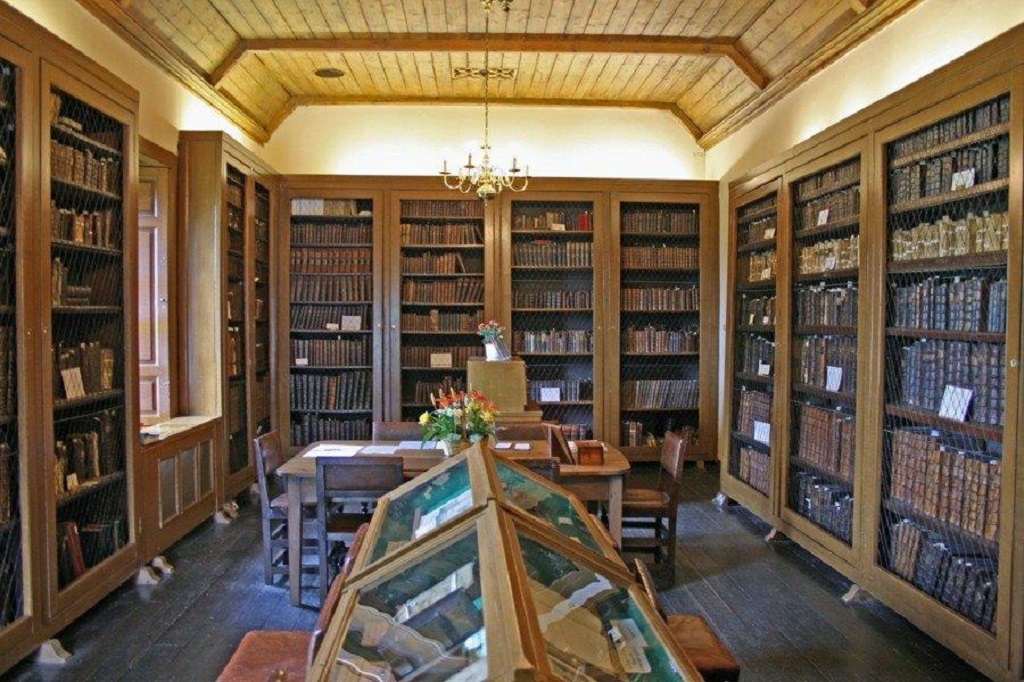A campaign to help raise £400,000 to help pay for restoration and conservation work at a historic Scottish library has been launched.
The Leighton Library building is stood in Dunblane, near Stirling, since the late 17th century, containing some 4500 books dating back to 1504.
But the building, opposite Andy Murray’s gold postbox, is in need of some restoration.
Most people pass it by and relatively few Dunblane residents have ever been inside it.
It is the Leighton Library, the oldest purpose-built private library in Scotland, built in 1687, housing a collection of around 4,500 books, the oldest dating from 1504.
Originally intended to house the collection of Bishop Robert Leighton (1611 – 1684, Bishop of Dunblane and Archbishop of Glasgow), who bequeathed his library to Dunblane it was added to in the 18th and 19th centuries and now forms a historic collection of international importance.
The building itself is a Category A listed and is of special historical and architectural interest.
Notable books in the collection include:
- The Edinburgh Edition of Robert Burns’ poems (1787)
- Dr Johnson’s Dictionary of the English Language (1755)
- A first edition of The Lady of the Lake by Walter Scott
- Thomas Paine’s The Rights of Man (1791)
- A signed copy of Queen Victoria’s Highland Journal, presented to the Library by Queen Victoria herself
- A fine collection of early maps, including a rare American Atlas from 1776
- Lady Jane Grey’s Prayer Book
- A first edition of Adam Smith’s Wealth of Nations
- A number of rare early Bibles
When it first opened in 1687, the Library was originally intended for the clergy of Dunblane Cathedral.

Inside the Leighton Library
It later became a subscription library and a reading room until the mid-19th century when it was effectively closed until restoration by volunteers in the late 1980s.
It is now managed by a small charitable trust and opens to the public in the summer season.
Whilst the book collection is in very good condition, the building housing it, now some 333 years old, is in pressing need of restoration. In particular, cement-based harling applied some 40 years ago is now considered detrimental to the fabric, as it effectively prevents the building from breathing and encourages damp in the walls.
This needs to be removed and a breathable lime-based harling applied. Additionally, several areas of stonework are eroded and need repair and the roof and chimneys need to be repaired.
The front of the building has a particularly fine marble cartouche made in the late 1600s which once bore the Bishop’s coat of arms. Specialist advice has been received that this needs to be removed, the fixings replaced and the whole thing restored by specialist conservators.
The Trustees have established an Executive Group to address the conservation project and an architect qualified in the conservation of historic buildings has been engaged.
There is now a detailed schedule of required works for which the current cost estimate is around £390,000. The Trust has a small income from donations and occasionally benefits from legacies but the reserves cannot even begin to meet the cost of the repairs.
Applications have been made to various funding bodies for grants, including Historic Environment Scotland but there still needs to be a considerable local fundraising effort for up to at least £150,000 to preserve this treasure for future generations. It is hoped, if funding can be secured, to start the repairs early in 2022.
Following discussions with Stirling Council and taking on board feedback from potential funders, the Group is also looking at how to open up the Undercroft (which is on street level; the Library is on the first floor) both as a community and library asset and to work with neighbouring historic sites to promote the Library.
For further information, visit www.leightonlibrary.org.uk
TAGS

